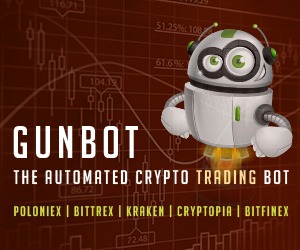In the U.S., median household income was just under $69,000 in 2019 , with the average base salary for a new graduate being just over $47,000 — approximately 30% less than the median household income. The dynamic is similar in Australia where average total annual earnings are just under AUD 94,000 with the average salary being just under AUD 68,000 and the average starting salary for graduates ranging between AUD 55,000 and 93,000 depending on the industry .
The U.S. median house price is just under $405,000 , approximately 6 times median household income and almost 9 times the average graduate salary. The Australian median house price is over AUD 950,000 , approximately 10 times average total earnings and up to 17 times the average graduate salary.
Assuming a simple 20% downpayment, a typical graduate needs to save 2 years gross salary in the U.S. and 3 years gross salary in Australia just for the downpayment. That doesn’t sound too bad on face value, but it needs a deeper dive.
There are flaws in this analysis; it’s not designed to be perfect but to demonstrate a point. For example, median house prices are more expensive than “starter” homes that younger homeowners might target. Or not doing it on a city-by-city basis so that for major cities, higher salaries (but also substantially higher house prices) are captured. Conversely, the 20% savings rate is possibly generous for most new graduates given the personal savings rate in the U.S. is well under 10%. Personally, I don’t think these things matter because the above snapshot completely disregards inflation. Adding it blows the numbers out of the water even on conservative assumptions. Taking the U.S. example:
That’s right, assuming 3% annual growth in net savings (which requires wages to outpace inflation!) and only 5% growth in house prices (well short of the 15-20% levels in most of the world today, but in line with the 30-year average), it would take 21 years to save for the deposit. Again, this is imperfect, but the point is it doesn’t take 2.1 years!
To pre-empt criticisms, some people may receive much larger salary increases over time due to promotions or job changes, i.e. at some point they may reach or exceed the average household income (but not necessarily before they have finished saving for a down-payment). Interest or investment earnings on the savings is also excluded. Interest rates are effectively zero presently and there are trade-offs for riskier investing of the downpayment. Also, some households may have savings rates in excess of 20%. For example, there will be dual-income, childless households saving towards this goal, which will greatly accelerate the process (although many would argue this dynamic is a direct response to the problem being discussed). The numbers are for a typical single person, not an outlier or high performer. Therefore, for most people even getting the keys to a mortgaged home is an increasingly difficult mountain to climb. It should be clear that inflation makes it even harder.
“You’ll Own Nothing. And You’ll Be Happy.”
There’s starting to be a widespread recognition that most young people will take decades to save for their first home. For example, research in the U.K. found half of all 20-35 year olds would still be renting in their 40s and a third by the time they claimed their pensions (timelines that make sense based on the high-level analysis above). As the World Economic Forum says , “you’ll own nothing. And you’ll be happy.”
Doing what was the cultural norm and societal expectation has now become highly aspirational and unrealistic for many who will give up trying or set their sights on a different goal. This alone has the potential to break the Modern Serfdom Model even without the interference and existence of the most perfect alternative: Bitcoin.
Freedom Money
Bitcoin’s value, whether it be measured in fiat currency terms or purchasing power, is designed to pump forever. It benefits from what is colloquially termed Number Go Up (NgU) Technology. Due to its fixed supply of 21 million coins, it will ultimately be the most scarce asset that has ever existed. Bitcoin preserves and grows the value of your savings relative to all other assets due to the powerful combination of this scarcity and its adoption curve. It breaks the Modern Serfdom Model:
Bitcoin provides options. When NgU works over a long enough timeframe you can become secure enough to walk away from a job you don’t like and not have to find another one immediately in order to make a mortgage repayment.
You don’t have to save for 20 years for a downpayment to buy bitcoin. It can be acquired immediately in small sizes due to its divisibility. You can start growing your wealth as soon as you earn income, rather than being forced to speculate in the stock market or hoard a melting ice cube of cash for a house downpayment. Bitcoin incentivizes saving early in life and avoiding debt — the complete opposite of the Model.
Bitcoin enhances flexibility and freedom of movement by being portable and borderless. If you choose to own bitcoin instead of real estate, you are no longer bound to a fixed location where your career started.
Bitcoin is immune to and even benefits from central banks’ monetary inflation, a key driver behind the house price growth that makes the process of saving for a downpayment so lengthy. That same inflation also grows the equity of existing homeowners but they remain in a bind until the real estate is sold or downsized.
Ultimately bitcoin breaks the Modern Serfdom Model by being a superior store of value than real estate . The state and legacy financial system fear it for good reason: it dismantles their mechanisms of control at every level.
This is a guest post by James Santi. Opinions expressed are entirely their own and do not necessarily reflect those of BTC Inc or Bitcoin Magazine.





